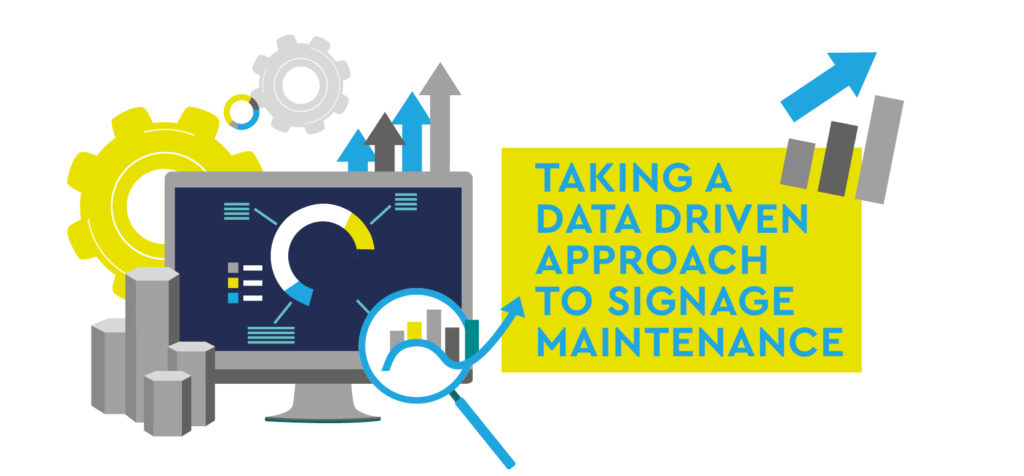
Love them or hate them, the computing age has transformed so much of your work. And while we all at times wish they weren’t so embedded in our lives, they do make so many tasks easier. Which is why we’re taking a look at how taking a data-driven approach to signage maintenance can benefit you and your business.
In previous posts we’ve been looking at the legal aspects of signage maintenance. In those, you will see how various pieces of legislation directly influence looking after your signage. There is the Health & Safety At Work Act covering risk. The Management of Heath & Safety At Work Act 1999 encompasses assessment. And the Town & Country Planning Act carries mandates around maintaining signage. These all place responsibility of signage maintenance on you.
In addition to the legislation mentioned above, you will also have various other records and paperwork relating to your signage. This includes the documentation provided by the sign maker, inspection reports, and invoices for site visits and repairs. Even if you have only one sign, the amount of data you collect over time will grow considerably. Which means keeping track of the condition of your signage can quickly become time-consuming. And if you have several sites, this issue can become significant enough to keep you away from other pressing tasks.
CMS and Signage
So the simple answer is to take a data-driven approach to signage maintenance. To do this you would typically use a Computerised Maintenance Management System, or CMMS. This CMMS solution lets you centralise the various maintenance tasks you may have throughout your retail or commercial outlets. This can include statutory testing – gas and electric tests for example – as well as manage the care of other assets. Fleet vehicles, fire and security technology, phone systems, printers, disability access equipment – they can all be looked after by a CMMS. But signage often gets ignored. Possibly as it is hiding in plain sight.
But if you use a CMMS system to care for your signage, it can help you save a lot of time, money and stress. By documenting the lifecycle of the signage in your estate, you can be more proactive when maintaining them. Inspections and repairs can be diarised to suit your business. You can budget maintenance more effectively, mitigating against unwelcome surprises. You could even find ways to reduce some costs. And it can support you if you are ever asked to show the maintenance plan you have for your signage.
An Example of Data Driven Signage Maintenance
Let’s take a look at a simple and practical example. Later this year, as we have covered recently, fluorescent tubes will no longer be available. So if your sign uses this type of lighting, towards the end of the year your sign may blow a tube and it can’t be replaced. So ideally you need to get the lighting in your signage upgraded to LED. A quick look at your CMMS system shows your signs are due for inspection this year – so you could have the upgrade done at the same time. That would avoid needing two visits, meaning less disruption. Your signs would cut your energy consumption, saving you money. And you won’t have to worry about any tubes blowing as it gets closer to Christmas. So less disruption.
Another big benefit of using a CMMS system is how it helps advise anyone asking you questions about how you look after your signage. As you know, it’s not enough to merely have the occasional checkover and a wipe-down. You must have a signage maintenance plan. A CMMS system is evidence of your plan being followed, and list any future tasks as well.
As you can see, a CMMS system could help you save a lot of time and reduce csts – and keep you on the right side of the law too. Which is why we strongly suggest taking a data driven approach to signage maintenance. It’s the stress-free way to keeping your signs safe and working hard to attracting customers to your door.